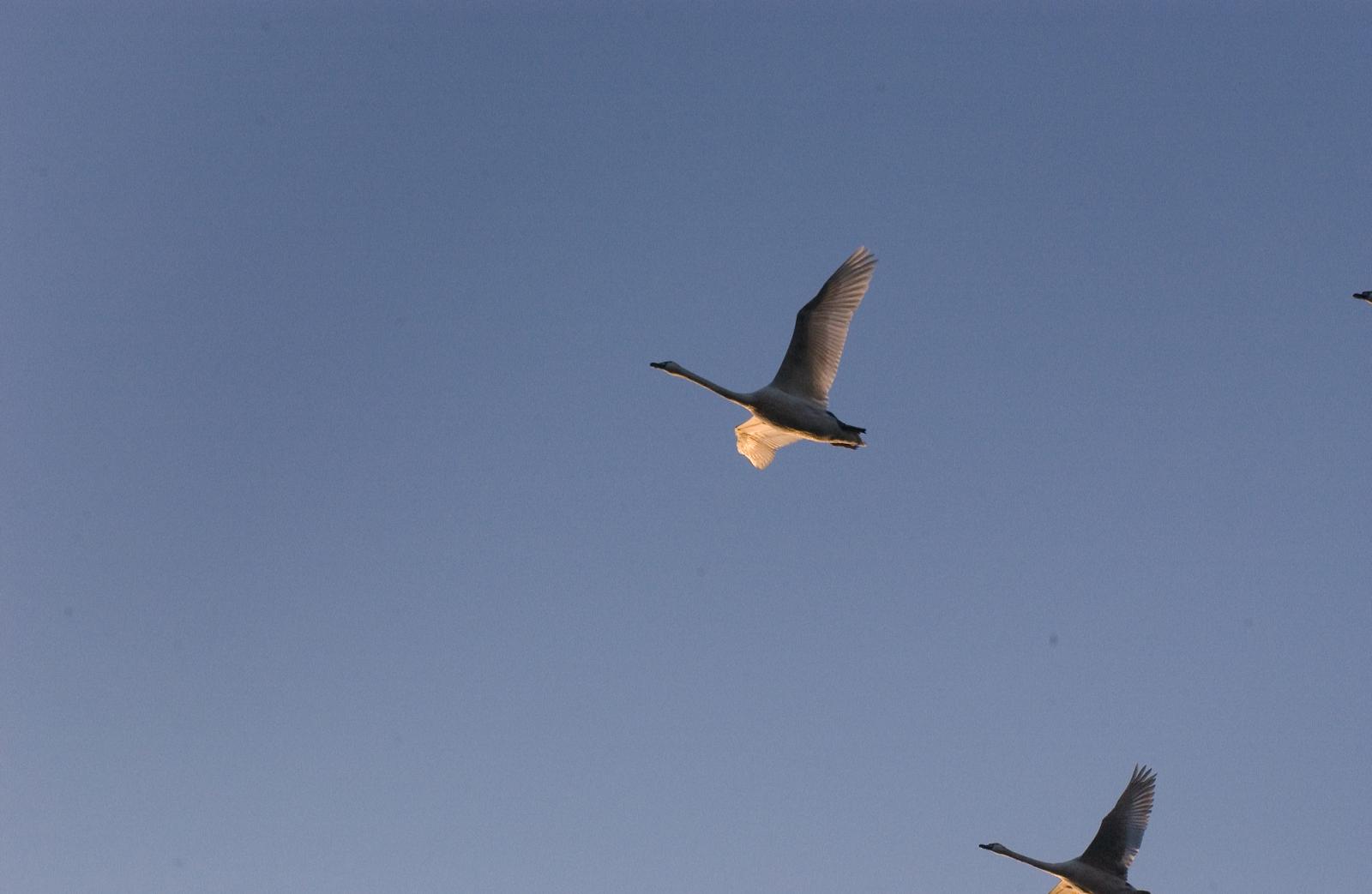This is the start of the quiet time for wildlife on the Vineyard. Fall migration is essentially over, with the possible exception of a few hawks that got a late start. Most of the hardy species that usually winter here in small numbers have retired to thickets and swampy places. This group includes birds like hermit thrushes, rufous-sided towhees, a few field and chipping sparrows, white-throated sparrows that nest much further north, and some slate-colored juncos. They will survive on natural seeds and berries from poison ivy, bayberry, bittersweet, winterberry, holly and an occasional crabapple. Cedar waxwings, robins and eastern bluebirds also are still around in small groups. Later in the winter, more of these three species may arrive from the Cape if they run out of food over there, making it look like an early spring influx.
This is also the beginning of the hardest time of the year for these landbird species since new food supplies and warmer weather cannot now be expected before March. Conditions become even more challenging if we get very low temperatures, lots of snow or both. Many become very dependent on feeding stations to survive, so be sure to keep your feeders full once you start. It is likely that your feeder may attract predators such as sharp-shinned or Cooper’s hawks, so the more shelter you can provide in the form of evergreens, even a pile of brush, near the feeding area will help the small birds you attract to avoid capture. It is probably true, however, that the hawks primarily catch less well fit individuals, so they serve to keep their prey populations healthier by eliminating the weakest members, so don’t begrudge the hawks their own meal too much.
Winter is when we sometimes find species that breed only in the north. Red and white-winged crossbills, evening and pine grosbeaks, redpolls and pine siskins usually show up at feeders where they find sunflower and thistle seeds or they may appear in areas where there are lots of pine and spruce trees bearing cones. Looking around the Island, I notice many spruces with large numbers of cones. However, the word from further north is that there are many cones, mountain ash fruits and alder seeds in the north too, so the birds may simply stay there and not bother to come this far south this winter. Stay tuned.
One of the highlights for me in winter on the Vineyard is waterfowl. Many sea ducks have passed through on migration, but many are here for the season and are distributed Islandwide. A flock of 61 brant can be seen most days in Ocean Park, Oak Bluffs, or along the Inkwell waterfront. One of their favorite foods is eelgrass which grows just offshore, one of the few places on the Island where it does in any profusion. Canada geese can be found in most large bodies of water or feeding in open fields at Farm Institute and Herring Creek Farm in Katama or at the Keith Farm in Chilmark. These birds are probably all residents that breed here and do not migrate south for the winter or north in the spring. So-called “flight” birds which do that are much more wary and unapproachable and rarely spend the winter this far north anyway. For the most part they winter around Delaware Bay or the Outer Banks.
Ducks that winter on fresh water ponds have arrived. Over 50 of perhaps one of the handsomest male ducks in the world, the hooded merganser, are now in Farm Pond in Oak Bluffs and another 40 or so can be seen in the cove by the Squibnocket Beach parking lot. A few lesser scaup and gadwalls are also there. Many buffleheads and some common goldeneyes can be found in Sengekontacket Pond, Edgartown Great Pond and Menemsha Pond. American wigeons are at the head of the Lagoon and in Edgartown Great Pond as is the usual raft of a few hundred greater scaup.
As most readers of this column know, the Vineyard Christmas Count will be held on Sunday, Jan. 3. About 30 to 40 hardy souls will venture out in whatever weather we are dealt to take as complete a census of the birds as they can. If you want to participate, call Robert Culbert, the compiler, at 508-693-4908. The hope is that we will find not only the usual species but also some scarce ones or even very rare ones such as the rose-breasted grosbeak that has been at Stan and Marie Mercer’s feeder in Chilmark as recently as last Sunday. Keep an eye out for birds like a dickcissel among flocks of house sparrows, a white-crowned sparrow or fox sparrow among the white-throats, perhaps an oriole or a late warbler such as a palm or orange-crowned, often eating suet. If you find any of these or other unusual species, call the Bird Line at 508-627-4922 so they can be included in our count. The many Christmas Counts nationwide provide very useful data on wintering species that can be analyzed over time to document population trends and better define changes in distribution patterns.
Even though it can be cold and the weather inclement, it is great fun to get out and see what birds are around through the winter. Next Monday is the shortest day of the year and so from now on our thoughts can begin to turn toward spring. We should keep this in mind as we look forward toward another New Year. Though there is certainly some cold winter weather still to come, the promise of the future is increasingly close every day.
Please report your bird sightings to the Martha’s Vineyard Bird Hotline at 508-627-4922 or e-mail to birds@mvgazette.com.




Comments
Comment policy »